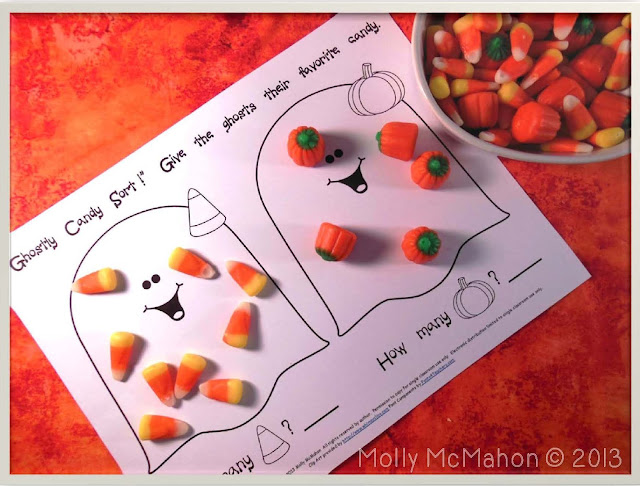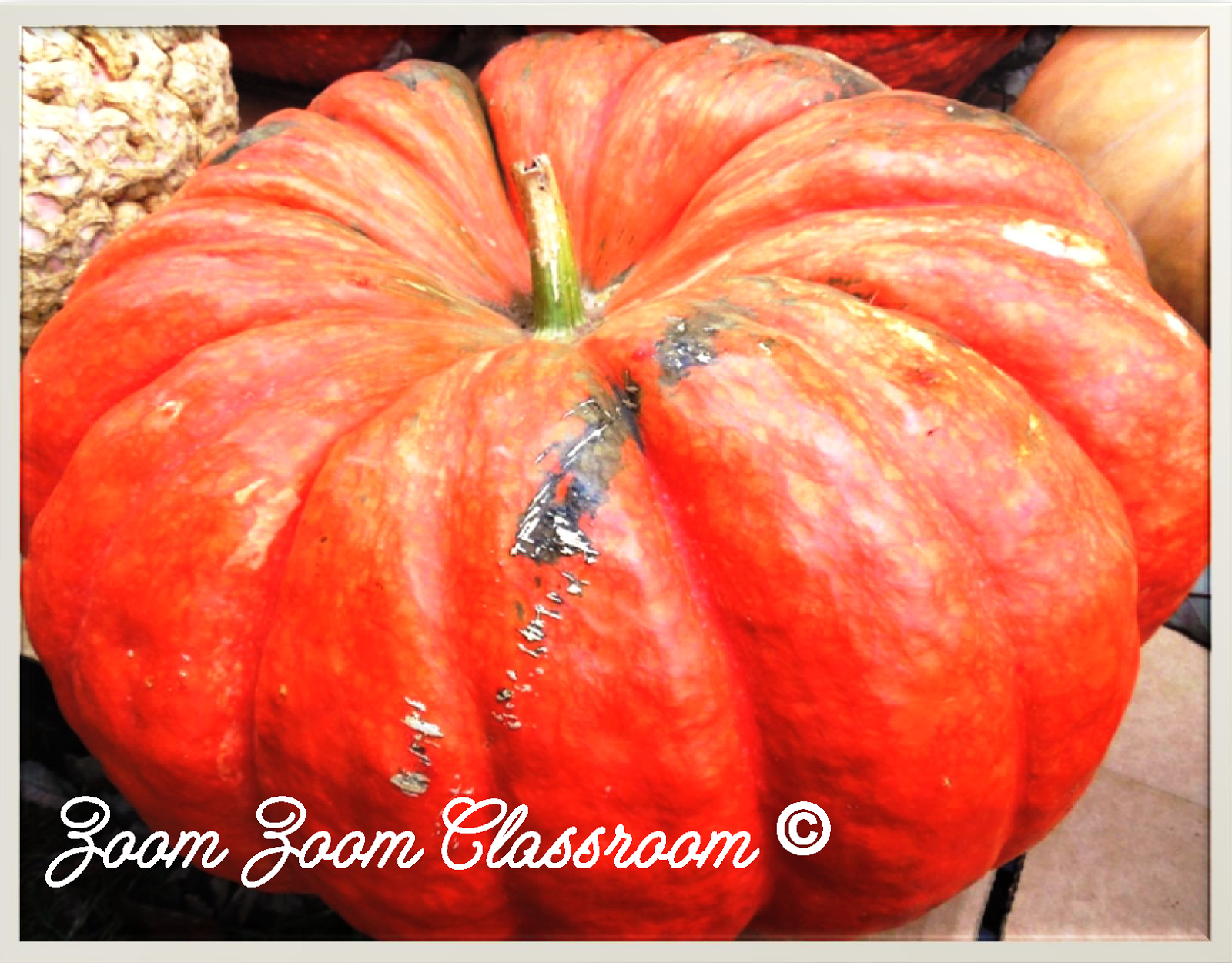The first activity is for pre-kindergarten and kindergarten. I love creating sorting activities for students to use. I like using things the children can manipulate in their hands. It's an effective way to present math activities . . . especially when introducing a new concept. We used the candy corn and the "Mellowcreme Pumpkins". (Visit the Brach's Candy website and go to the link that says "Halloween Candy" to see what I'm referring to.) Each child gets a small, plastic sandwich bag with some of the candied pumpkins and the candy corn inside. I program the amount so that each child has about 5 pumpkins and 8 candy corn pieces. The children sort the candy into two groups - one group for the pumpkins and the other group is for the candy corn. This year I made a sorting sheet to go along with the activity so the children could sort directly on the sheets and record their results. Below are some of the photos of how it's done.
 |
| Students sort the candy corn and pumpkin shaped candy into two groups. |
 |
The remaining activities are for first and second grade. You'll need the books to go with these. There's a link at the end of this post of where you can acquire them.
We had a read-aloud for the story titled, The Teeny-Tiny Woman by Paul Galdone. Are you familiar with this ghost story? It's such a fun story to act out and have all the children shout, "TAKE IT!" at the end. The main character in the story, the teeny-tiny woman, learns an important lesson:
Don't Take Things That Belong To Someone Else.
If you've heard the story before, you might be aware of another moral in the story which is:
Perseverance Yields Results.
Hmm. . . could it be that the little voice which kept saying, "Give me my bone!" was nothing more than a little dog wanting what was rightfully his returned to him? Maybe we should say:
"Dogged Effort Wins Out in the End."
That's a lesson both teachers and students can use!
I don't want to miss this opportunity to evaluate listening comprehension. I want to know who was tuning into the story and who had their thoughts elsewhere. It's time prohibitive to ask each of the students a question about a read-aloud. What usually happens is that a handful of questions are asked with a few of students called on to answer. Information about the majority of the students' listening comprehension on a given read-aloud is unknown. I've started to make quizzes to check listening comprehension after a read-aloud. This way, I can measure all students' listening comprehension instead of just a few. I used a multiple choice format to make the quizzes. The quiz has ten questions. However, the quiz can be reduced to five questions by eliminating the second page. Since I'm measuring LISTENING comprehension and not READING comprehension, I read the questions and the answer choices to the students. You can see the preview below.
If you'd like a copy of my quiz for, The Teeny-Tiny Woman by Paul Galdone, click the image shown below.
In order to compare and contrast one ghost story with another we also read, The Little Old Lady Who Was Not Afraid of Anything by Linda Williams. If you're familiar with this story, you know that the beginning is the same as The Teeny-Tiny Woman with the main character being a woman that is going for a walk. In Linda Williams's story, clothes and a pumpkin head make sounds and follow the old lady while she takes her walk. Eventually the clothes and pumpkin head reveal to to the little old lady that they want to be frightening. In fact, they are quite frustrated that they couldn't scare the little old lady. The clever little old lady finds a purpose for the clothes and pumpkin head. This turns out to be mutually beneficial to all . . . except for a group of crows! Below are the pages from my quiz for The Little Old Lady Who Was Not Afraid of Anything.
If you would like my quiz for The Little Old Lady Who Was Not Afraid of Anything, click the image below:
Here are the links to where you can get the books:
If you would like my quiz for The Little Old Lady Who Was Not Afraid of Anything, click the image below:
Here are the links to where you can get the books:
The cute image graphics of the bone, ghost, candy corn, pumpkin, and jack-o-lantern came from www.whimsyclips.com
© 2013 Lessons by Molly. All rights are reserved.













































